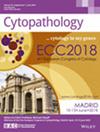Investigating Career Advancement in Academic Cytopathology Workforce: A Gender and Regional Comparison
Abstract
Objective
Using bibliometric analysis to inform factors impacting career mobility, focusing on gender and regional variations in academic cytopathology.
Methods
The Scopus database was used to determine the productivity and experience of cytopathologists who are faculty from the 92 fellowship programs. The dependent variable was promotion to the rank of Professor. A regression analysis was conducted with productivity (h-index), experience (years in publication) and one's geographic work location as covariates to investigate the role of gender in promotion.
Results
The gender distribution is skewed towards females at the Assistant (62.4% vs. 37.58%) and Associate Professors (70.51% vs. 29.49%) levels, but the gap narrows at the full-professor rank (52.98% vs. 47.02%). The regression model showed significant regional variation in promotion for the Southern (0.35; 95% CI, 0.16–0.79; p = 0.012) and Northeastern (0.24; 95% CI, 0.10–0.57; p = 0.001) regions compared to the West. Active years of publishing (1.18; 95% CI, 1.11–1.27; p < 0.001) and productivity (1.09; 95% CI, 1.06–1.12; p < 0.001) were factors in promotion. The mean HI productivity was comparable between the males and females in the first (4.41 for males and 4.40 for females) and the second decade (13.81 for males and 12.84 for females). However, the gap widened into the third decade (30.27 for males and 26.40 for females), suggesting potential areas for improvement.
Conclusion
While the academic cytopathology workforce is progressing towards gender equity, there is still room for improvement. Our findings suggest that focusing on mid-career professionals(between the second to third decades) by providing additional resources for research and facilitating work–life flexibility can help close the gender gap at the highest level.


 求助内容:
求助内容: 应助结果提醒方式:
应助结果提醒方式:


